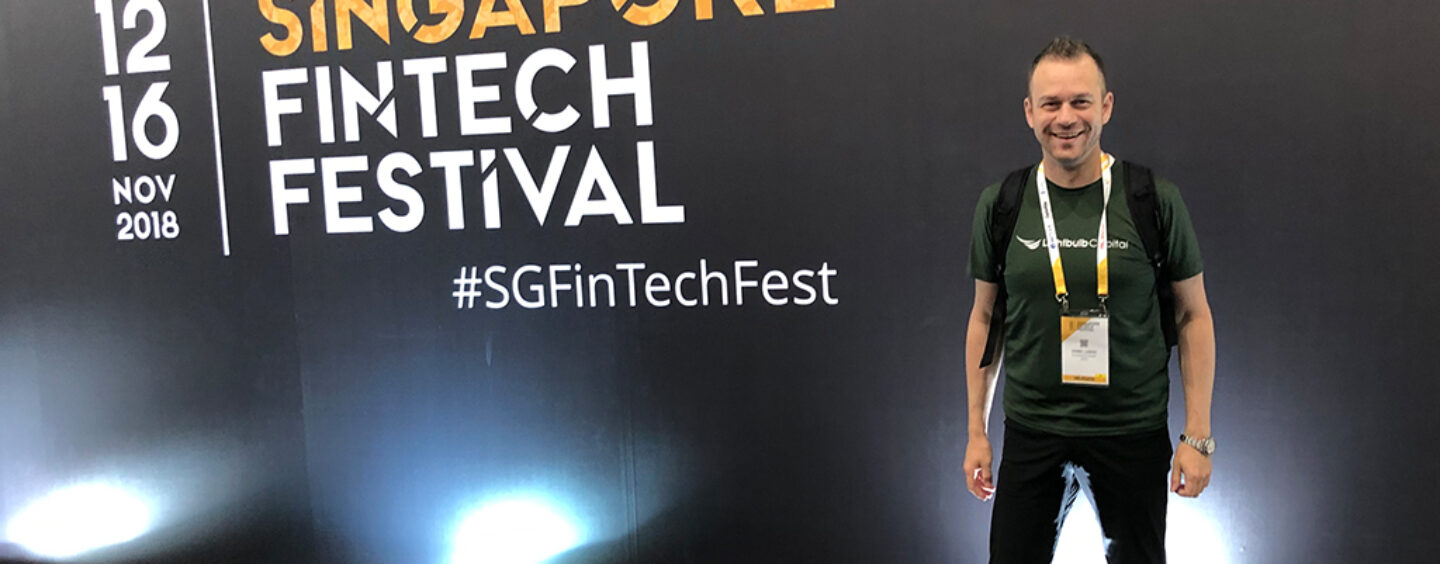
Essential Tips for Incumbents Looking to Work with Fintech Startups
by Christian König October 24, 2019The fintech ecosystem has grown tremendously, it is a fact that is obvious to anyone who is paying even the slightest attention to the space. As the ecosystem grows, so does the difficulty of navigating it become.
Given that incumbent and fintech partnerships are on the rise, exploring how to engage the ecosystem would prove very useful to many who are in this space.
To help navigate this complex space I could think of no better to speak to than Daniel Liebau who founded the fintech-focused boutique corporate finance firm Lightbulb Capital.
Based out of Hong Kong, Daniel started the firm in 2014 with a clear mission in mind; to bring much-needed innovation to finance. Daniel has consistently been active within the fintech ecosystem and he is perhaps best known for coming up with the 2018 Singapore Fintech Champions List.
But Daniel is no stranger to this space, he’s been operating in this industry since 1999, way before the word fintech become a buzzword. He’s had an illustrious career prior to founding his firm, he was most recently the COO and Board Member for HSBC and he has also head IT for major organisations like UBS, Close Brothers and Barclays Capital in Frankfurt, London, Singapore and Tokyo.
Below is a snippet from my conversation with Daniel,
1. Give us a sense of who you work with in Lightbulb Capital and what your broad views are on Asia’s Fintech Ecosystem
We work with all of them; banks, insurers, investors, regulators, start-ups, accelerators, industry associations, big tech firms and universities to provide actionable advice around Innovation in Finance and eventually roll up our sleeves and support clients hands-on. And I love it! Over the last five years, the ecosystem has developed in light speed, and some remarkable things happened:
A few examples:
- The Asia Head of JPM Asset Management IT declared at a conference I presented on FinTech engagement how it was too risky to do releases on the weekend, so they switched to do them during the week. The start-up approaches do take over at large financial services institutions.
- Non-Finance companies like Amazon or Grab hired a Head of Financial Services while most financial services firms now have not only a lone Head of Innovation but whole teams to bring Innovation to Finance.
- The number of FinTech start-ups across Asia is not only continuously growing across different locations such as Hong Kong, Shanghai, Beijing, Tokyo, Singapore, Manila, Indonesia and Vietnam. It’s also the large firms like Ping An, Alibaba / Ant, Singtel, Unionbank, Standard Chartered and others putting more and more focus on leveraging novel technologies such as AI and Blockchain, data (traditional and alternative) and even more importantly, new business models.
- Regulators across the region compete to create the most innovation-friendly environment while still maintaining a stable financial system and protecting (retail) investors. With new regulation and sandboxes in many countries in the region on the one hand and a laissez-faire attitude (ex blockchain) in China, one can sense the appetite for fintech is ON.
- FinTech (588 papers on SSRN)and Blockchain (1309 papers on SSRN) research are going through the roof. And so are educational programs at the undergraduate, graduate and executive education level. Singapore Management University was the first school of offer an executive education program on FinTech and Innovation in Finance in the region about three years ago and had since then expanded the scope to a variety of courses from Innovation Culture to Python programming. Some of the Asian academics are not only chipping in but often leading the pack, for example, David Lee in the Blockchain space.
2. What, in your mind, are the three most relevant strategies for engaging/becoming part of the ecosystem?
Firms need dedicated resources to make innovation happen, yes.
I am with Drucker when he says the fires of today are always too significant to focus on the ones that may appear tomorrow. But it is crucial to have “line of business” support and realize that eventually, we do what we do to support them, complement them and enable them to streamline and grow.
Managing expectations is also key. We have to be conscious that many startups despite how innovative might not survive in the long run and that change in financial services is at best, creeping. It certainly doesn’t happen overnight. Using the three horizon model by Terwiech and Ulrich might be a good start to manage the portfolio of FinTech activities.
Firms also need to develop a model for fintech engagement with the parts of the bank that have the least incentive to agree to experimentation such as sourcing and IT security.
For example, vendor onboarding decisions cannot possibly rely on a single set of rules regardless of whether one is trying to onboard IBM or a small fintech start-up. The key is to manage risks and enable faster progress and technology deployment and partnerships. It’s also important to be transparent with the regulators on your plans and involve them early in novel business activities if and when required.
3. What are some common mistakes, in your view, that people make when trying to engage with the ecosystem?
I am going to sound ancient here, but that’s intentional. Your fintech person has to understand finance and your main business line. Forging fintech partnerships is not just about how to talk to entrepreneurs and conducting design thinking workshops. These people are hard to find, but investment in them will most certainly pay off. To understand revenue drivers and where the cost comes from in a financial services business is as important as knowing the hottest accelerator for fintech start-ups.
I’ve observed some making the mistake of expecting fintech startups for free. While experimentation is supposed to be cheap, it is not supposed to be free.
It’s a challenge to be perceived as a respected partner within the ecosystem if you are shortchanging startup on a small fee of US$ 50,000 for a minimum viable product. I advocate for incumbents to work with small and incremental deployment of project budgets towards experimentation and fintech partnerships
5. What are some of the most exicting things you are seeing in the Fintech Ecosytem?
On the regulatory side, I am impressed with the work MAS is doing. For example, the publishing of the FEAT principles for the ethical use of AI in Finance is a great stepping stone for others to build on and operationalize these principles when deployment machine learning and other AI techniques. Ethical use of AI in Finance will be a crucial space to watch in 2020.
When it comes to fintech use cases, I think Coins.Ph in the Philippines who was recently acquired by Grab, is a fantastic example of a firm that leveraged emerging technologies like blockchain with a customer need, in this case, need for affordable payments.
I continue to be a fan of Taiger, the AI company based in Singapore that has recently closed its funding round at a 110m valuation. Taiger technology looks superior compared to other ML-based firms that are already valued much higher. To me, with regards to its capabilities and will most likely emerge as a global tech firm, headquartered in an Asian jurisdiction. Interestingly the demand for propositions like the one Taiger offers, knowledge-worker automation, is only going to be in need if the global economy was to slow down significantly.
On the academic side, I think Douglas Arner of Hong Kong University does excellent work. His latest paper is probably a good read for those who want to learn even more about the Asia FinTech ecosystem.
When we look at big financial services firms across the region, Ping An stands out. I have the pleasure to have met Ericson Chan, the CEO of Ping An Technologies. The advances they are making in connecting financial services, smart cities, healthcare and other verticals is very impressive. There are many lessons that traditional firms can learn from such an organization, especially when it comes to speed of execution. They do not seem to have that well known “fear of duplication” that some western firms display and which in turn makes them slow. Ping An believes in internal competition and that the best solution will succeed.
When it comes to investors Sequoia India keeps making fascinating choices, for example, SmartKarma, the investment research platform or Onchain Custodian, a digital asset custody firm build by Chinese Blockchain project Ontology.
And finally, the one fintech firm I am excited about currently is UangTeman, a micro-lending platform in Indonesia whose founder managed to close the Series B funding of 10 million USD. To increase return on equity for any financial services provider, the identification of a new customer base is so important – perhaps more important than to improve the cost-income-ratio. Unfortunately, that is what most of the more traditional firms will prioritize. It has to be a healthy mix of both.
Thanks Daniel for your time today, any final comments?
Thank you, Christian, it is always a pleasure to discuss and work with you. Media platforms, like Fintech News, probably the leading one in the region, also play an essential part in the ecosystem. I would encourage anyone interested in fintech in Asia to sign up for Fintech News Singapore’s newsletter to stay abreast of recent developments.






